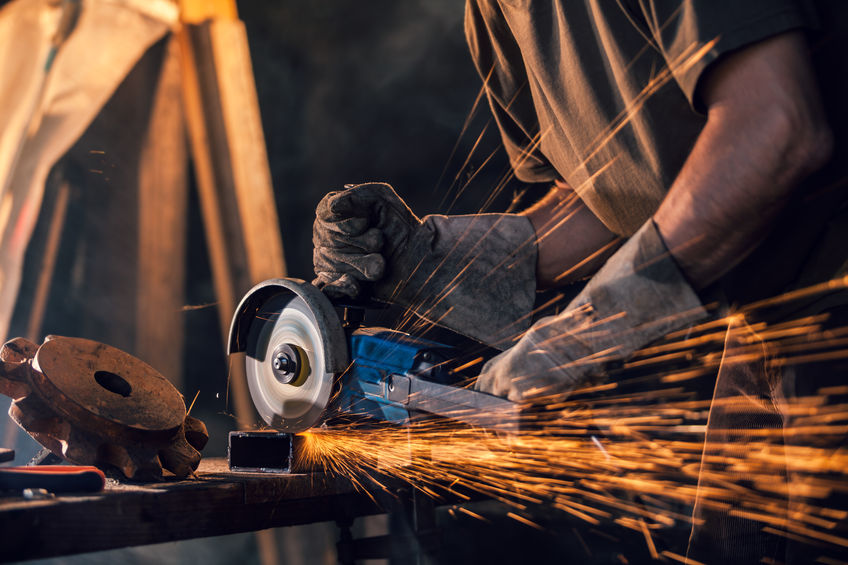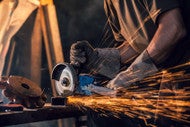Metal Art Tools: A Primer
Jul 15th 2020
 If you want to explore your creative side, there's no end to available outlets for artistic expression, and metalworking is definitely a viable option. Getting started in this medium comes with a learning curve, however, and the first thing you need to figure out is what tools you'll need. Here's a brief primer on the basic tools needed to make artworks in metal.
If you want to explore your creative side, there's no end to available outlets for artistic expression, and metalworking is definitely a viable option. Getting started in this medium comes with a learning curve, however, and the first thing you need to figure out is what tools you'll need. Here's a brief primer on the basic tools needed to make artworks in metal.
Bandsaw
It's definitely possible to use scrap metal in your artwork, but as you progress, you'll want the ability to cut larger pieces of metal, and a fixed bandsaw is a must for heavy-duty work. When used properly, it's a fast, efficient, and relatively safe way to cut large or small pieces of metal, although it's not ideal for precision shaping.
Nibbler or Shears
These handheld cutting tools are an excellent supplement for your bandsaw as they offer greater precision when cutting sheet metal. Nibblers cut through sheet metal quickly, but create a lot of metal shavings in the process, so there is some cleanup involved. Shears are equally quick and leave no shavings behind, but they can warp the edges of metal as they cut.
Nibblers offer more precision with curved cuts, but you can offset this by choosing double cut shears that distort metal less than single cut counterparts. You'll have to weigh the pros and cons before choosing, or simply get both tools if you think you'll use them with equal frequency.
Plasma Torch
If you're serious about creating metal art, eventually you'll want to use a plasma torch. This tool can be dangerous in untrained hands, but with practice, you can use it to create precision steel cuts quickly and with a tidy finish.
Arc Welder
Now that you've disassembled metal for your project, you need to start putting pieces together to create your vision. This is where a welder comes in. While there are three main types of welding tools to consider – arc, MIG, and TIG – you'll probably want to start with the basic arc welder, which is the least expensive and ostensibly the easiest to use. You can always upgrade to other welding tools later on as you gain experience.
Grinder
There are two types of grinders you might want to work with: a die grinder and an angle grinder. The rotary die grinder is powerful and fits into small spaces, making it a versatile addition to your tool kit. The angle grinder is significantly more powerful, but also much bigger. You'll probably want both for different jobs.
Pliers and Clamps
You might need to hold pieces of metal while you cut, grind, or weld them, so having a variety of pliers and clamps on hand (including table clamps) is ideal. Pliers can also be used to bend metal to desired curves or angles.
Safety Equipment
Metal working can be dangerous, so it's best to practice safety first, starting with protective eyewear (goggles), gloves, and possibly earplugs, depending on the equipment you're using. For welding, you'll want an appropriate apron and a helmet/face shield.
In Conclusion
When you create art, having the right tools at hand is half the battle. Of course, if you would rather just have metal art as part of your home decor now—without the investment of time and money into learning metal working—Black Forest Decor has you covered.

